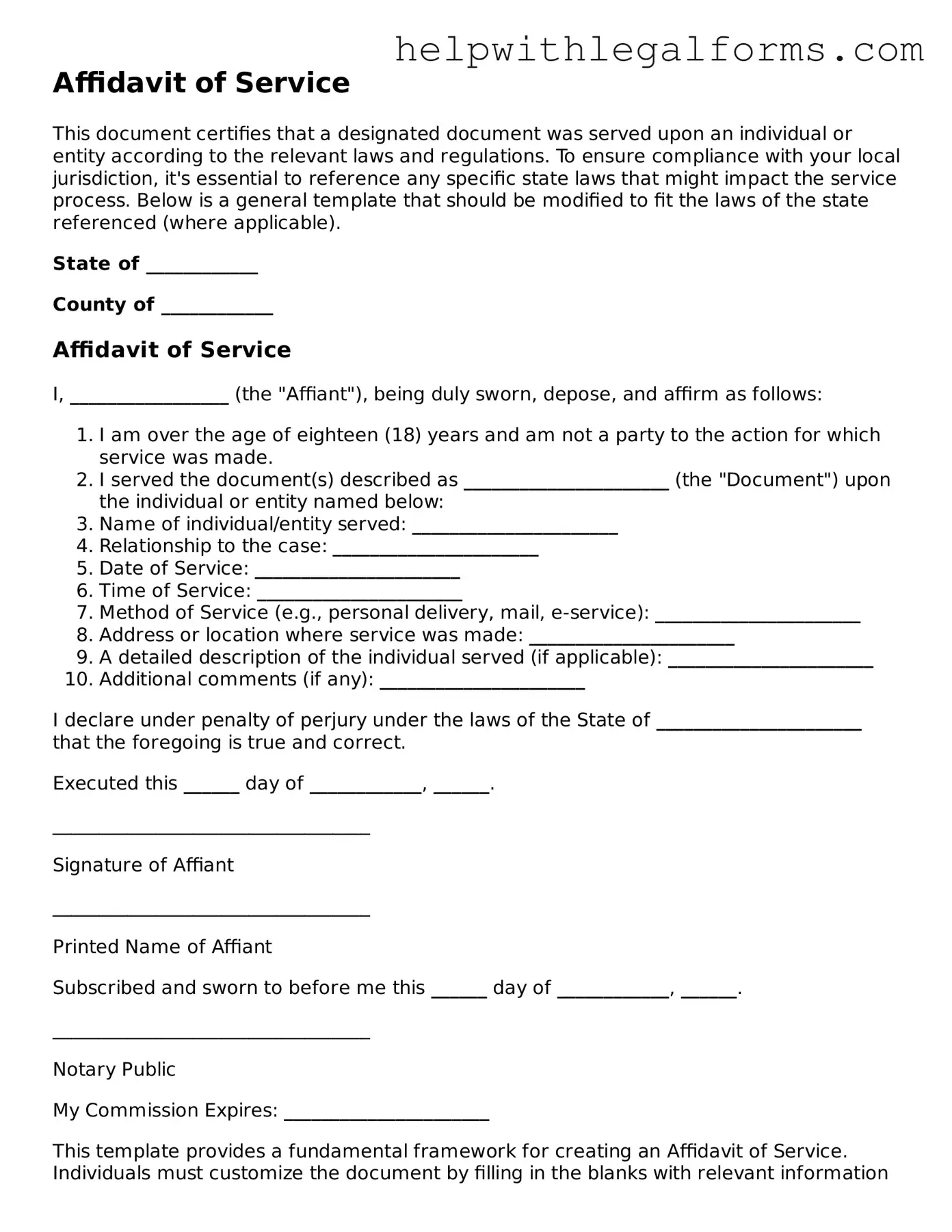Affidavit of Service
This document certifies that a designated document was served upon an individual or entity according to the relevant laws and regulations. To ensure compliance with your local jurisdiction, it's essential to reference any specific state laws that might impact the service process. Below is a general template that should be modified to fit the laws of the state referenced (where applicable).
State of ____________
County of ____________
Affidavit of Service
I, _________________ (the "Affiant"), being duly sworn, depose, and affirm as follows:
- I am over the age of eighteen (18) years and am not a party to the action for which service was made.
- I served the document(s) described as ______________________ (the "Document") upon the individual or entity named below:
- Name of individual/entity served: ______________________
- Relationship to the case: ______________________
- Date of Service: ______________________
- Time of Service: ______________________
- Method of Service (e.g., personal delivery, mail, e-service): ______________________
- Address or location where service was made: ______________________
- A detailed description of the individual served (if applicable): ______________________
- Additional comments (if any): ______________________
I declare under penalty of perjury under the laws of the State of ______________________ that the foregoing is true and correct.
Executed this ______ day of ____________, ______.
__________________________________
Signature of Affiant
__________________________________
Printed Name of Affiant
Subscribed and sworn to before me this ______ day of ____________, ______.
__________________________________
Notary Public
My Commission Expires: ______________________
